Chapter 16 - The New Deal
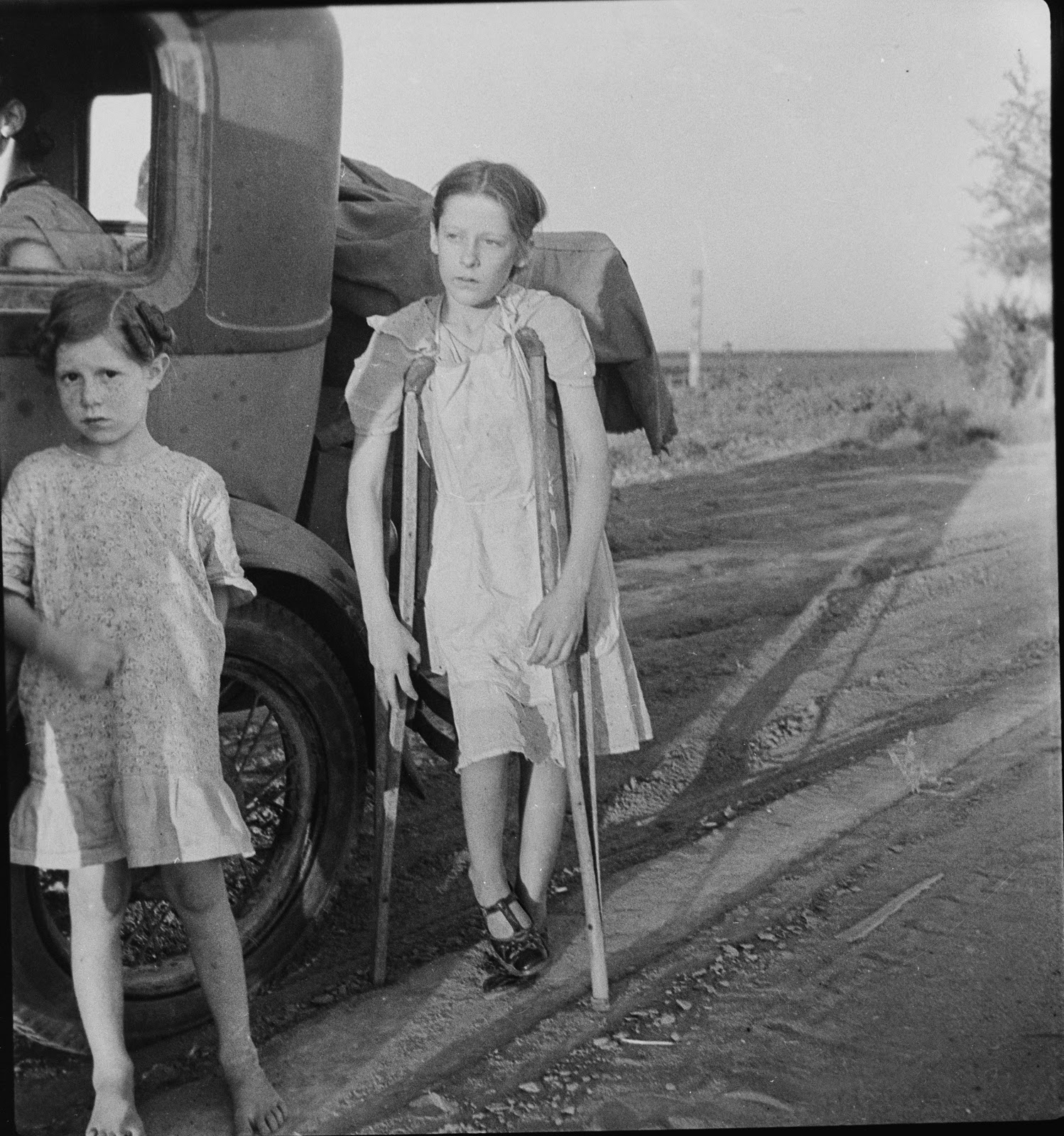
Total Video (00:14:39)
“We must be the great arsenal of democracy.” President Franklin D. Roosevelt, 1941
Early Response to the Depression
The earliest responses to the Depression were either wrong in their approach or too limited to stop the downward slide. In 1930, the Smoot-Hawley Tariff raised duties on imported goods to protect American manufacturers. Other nations retaliated by raising their own tariffs, thus bringing international trade to a standstill. In early 1931, the New York branch of the Federal Reserve, acting against President Hoover’s advice, tightened credit at precisely the time that more credit was needed to get the economy moving. Fearing that direct relief would lead to a permanent welfare class, Hoover helped create the Reconstruction Finance Corporation in 1932. The RFC was capitalized at $500 million to give loans to RR's and banks. It poured $15 billion into the economy over the next 10 years becoming the most successful of any program to combat the Depression. Unfortunately for Hoover and the Republicans, the RFC was too little, too late to keep them in power.
Changing of the Guard
Both parties scrambled to win votes in 1932. Since neither had a focused plan of recovery they seized on any issue that might promise a return on their efforts. Both parties sought an end to Prohibition, perhaps in the hopes that a good, stiff (and legal) drink might appeal to a public trapped in such circumstances. While the Democrats had no coherent formula for fighting the Depression either, they were, nonetheless, singularly fortunate not to have been at the helm when the Depression struck. Calling for a balanced budget, large cuts in federal spending and expanded relief programs simultaneously, the Democrats didn’t seem to mind or notice the conflicting messages they were sending. In fact, Americans of both parties were at such a loss for how to respond and so eager to try anything that they elected Franklin Delano Roosevelt on his enormously vague promise of “bold, persistent experimentation.” Hoover had tried to engage Roosevelt in debate over economic principles but to no avail. Roosevelt won the election due to his personal warmth, vagueness and, most importantly, the fact that he wasn't a Republican.
ROOSEVELT AND THE NEW DEAL
Video (00:03:34) The Presidents Franklin D. Roosevelt (https://login.proxy.nmc.edu/login?url=http://fod.infobase.com/PortalPlaylists.aspx?wID=105019&xtid=43179&loid=94106)
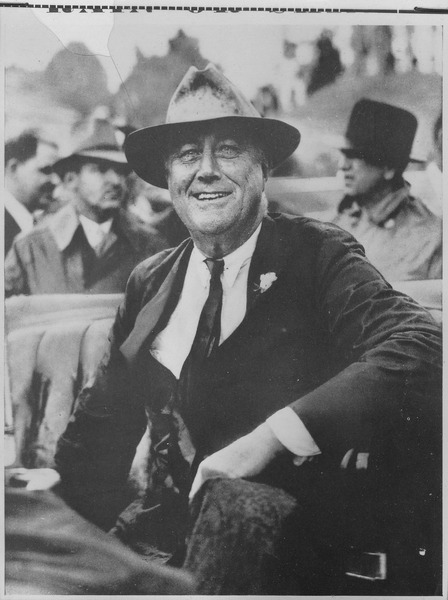
In 1933 the new president, Franklin D. Roosevelt, brought an air of confidence and optimism that quickly rallied the people to the banner of his program, known as the New Deal. “The only thing we have to fear is fear itself,” the president declared in his inaugural address to the nation.
In one sense, the New Deal merely introduced social and economic reforms familiar to many Europeans for more than a generation. Moreover, the New Deal represented the culmination of a long-range trend toward abandonment of “laissez-faire” capitalism, going back to the regulation of the railroads in the 1880s, and the flood of state and national reform legislation introduced in the Progressive era of Theodore Roosevelt and Woodrow Wilson.
What was truly novel about the New Deal, however, was the speed with which it accomplished what previously had taken generations. Many of its reforms were hastily drawn and weakly administered; some actually contradicted others. Moreover, it never succeeded in restoring prosperity. Yet its actions provided tangible help for millions of Americans, laid the basis for a powerful new political coalition, and brought to the individual citizen a sharp revival of interest in government.
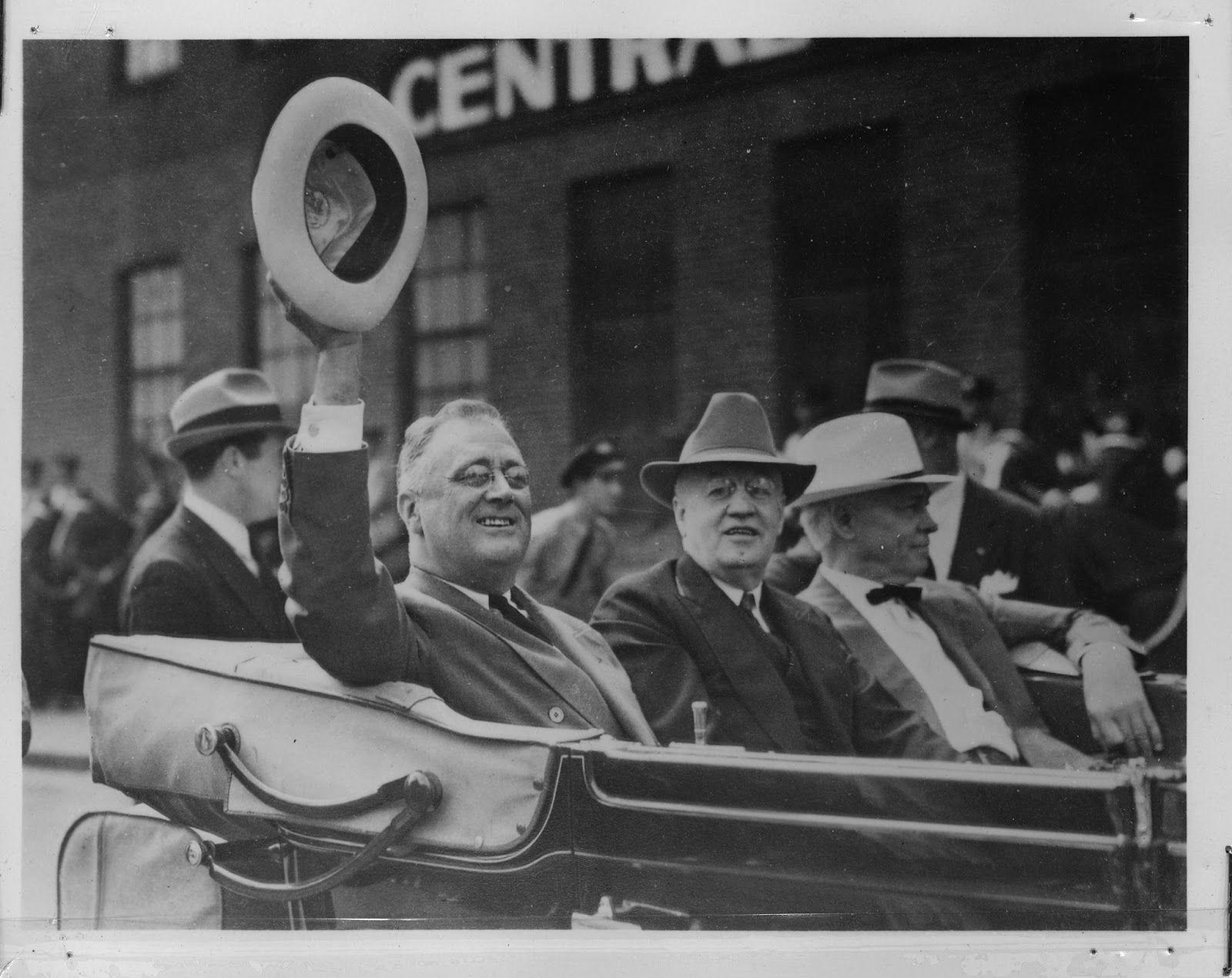
The First Hundred Days
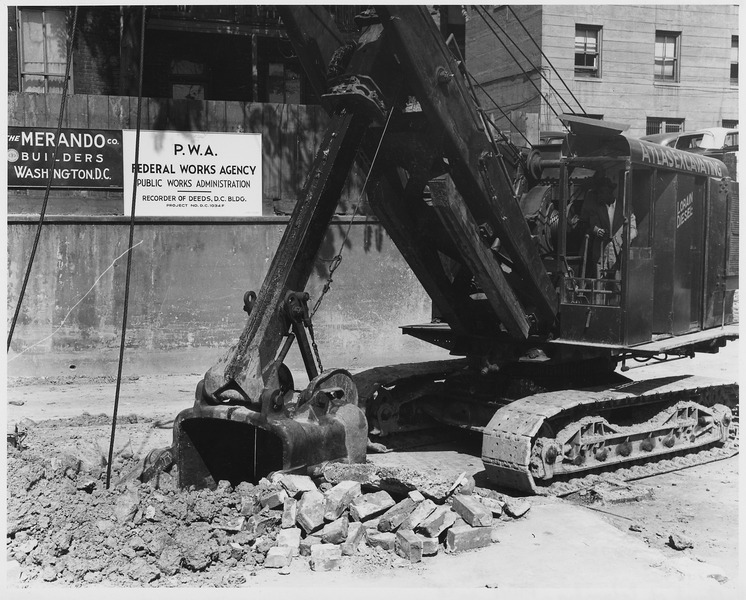
Franklin Delano Roosevelt took office in early 1933 and wasted no time in delivering his “bold, persistent experimentation;” he tinkered with banking, industry and labor in hopes of quickly ending the Depression. Within the first 100 days, Roosevelt sent a raft of legislation to the Congress, some of which returned for his signature the very day he’d sent it. He announced a four-day Bank Holiday, allowing only those banks on a sound footing to reopen, and established the Federal Securities Act to police Wall Street and prevent the wild, often underhanded, trading that had helped cause the crash. The Glass-Steagall Act gave the Federal Reserve greater power to control wild bank speculation and guaranteed bank deposits up to $5,000 by establishing the Federal Deposit Insurance Corporation (FDIC). The National Industrial Recovery Act (NIRA), which established the National Recovery Administration (NRA), had as its goal, the bringing together of labor and industry to force their cooperation, limit production, establish a minimum wage and restart American industry. In Section 7a of NIRA, labor was guaranteed the right to bargain collectively, thus making unions a powerful force in industrial bargaining.
![Clockwise from left: CCC poster; FDIC logo; TVA poster; NRA poster. [Public Domain], via Wikimedia Commons.](https://www.oercommons.org/editor/images/3435)
Clockwise from left: CCC poster; FDIC logo; TVA poster; NRA poster. [Public Domain], via Wikimedia Commons.
THE FIRST NEW DEAL
The first New Deal focused on direct relief (hand-outs) and indirect relief (work projects) to get Americans fed and working again. The new administration established the Federal Emergency Relief Administration (FERA) to give direct aid to the unemployed. This program provided federal money to states which would produce matching funds, then distribute aid accordingly. As nobody in either party wanted a permanent welfare state, work relief (indirect relief) became the higher priority. The Public Works Administration (PWA) built schools, courthouses, hospitals dams and aircraft carriers. Roosevelt's favorite program, the Civilian Conservation Corps (CCC) was employed in conservation projects, reforestation and prevention of soil erosion. More than two million young men went through this program under army discipline, wearing army clothing and living in army housing. One of the most effective programs was the Tennessee Valley Authority (TVA), which consisted of nearly two dozen flood control dams; these dams also produced hydro-electric power. The TVA injected life, electricity and order into one of the nation’s poorest economic regions.
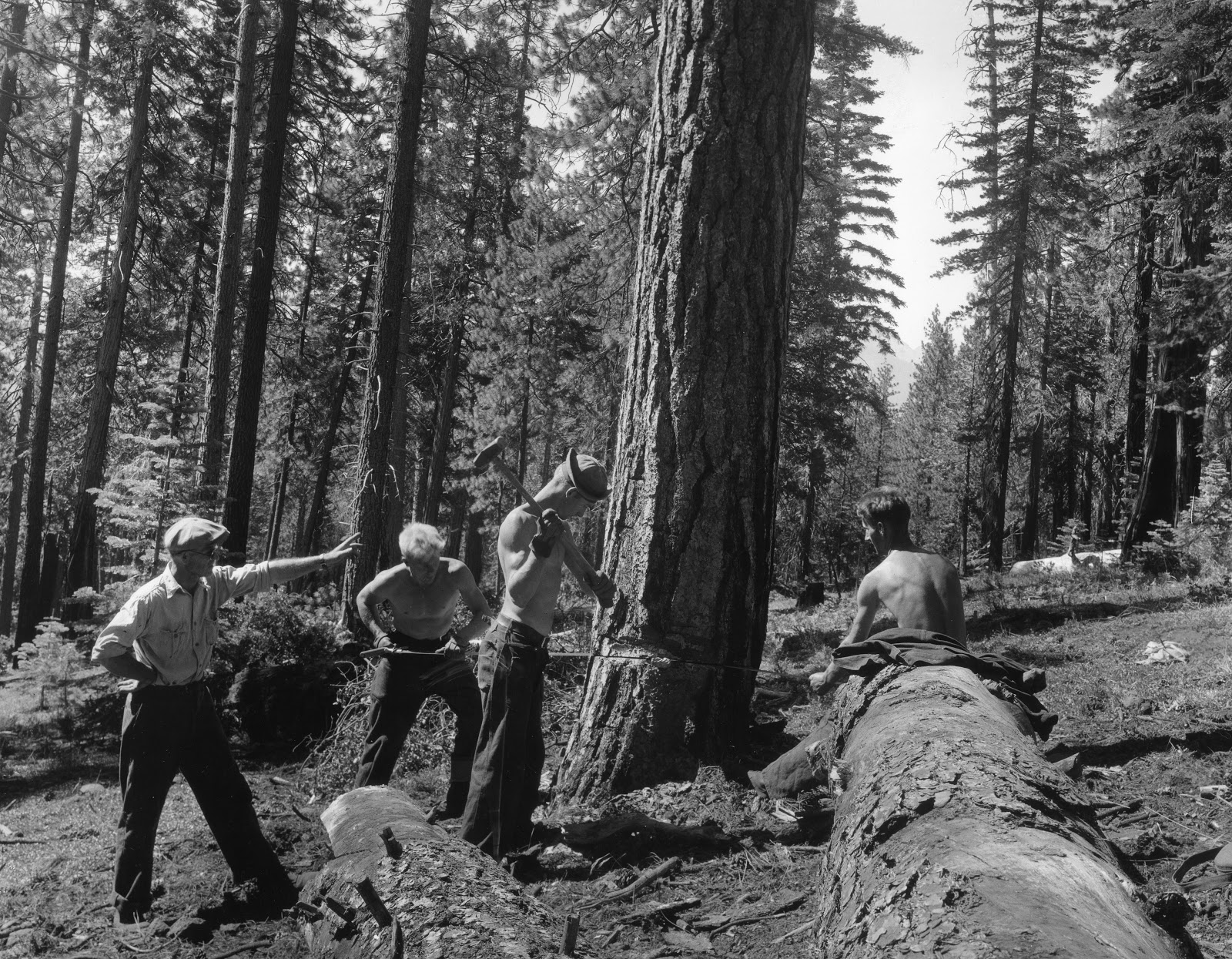
Agriculture
One of the most controversial pieces of New Deal legislation was the Agricultural Adjustment Act (AAA). With this, the government tried to boost the traditionally low income and poor buying power of farmers by paying them to plow under their fields and slaughter stock in order to boost agricultural prices. This tremendous waste, given such tremendous poverty, struck a raw nerve with the impoverished, non-farming, taxpayers who were footing the bill in the form of taxes and higher produce prices. To stem the tide of farm and home foreclosures the Farm Credit Association and Homeowners Refinancing Act were enacted in 1933 and 1934 respectively to provide long-term, low interest refinancing. Finally, citing liquor excise taxes as a vital source of revenue, the Twenty-first Amendment repealed Prohibition and the First New Deal came to a close in 1934.
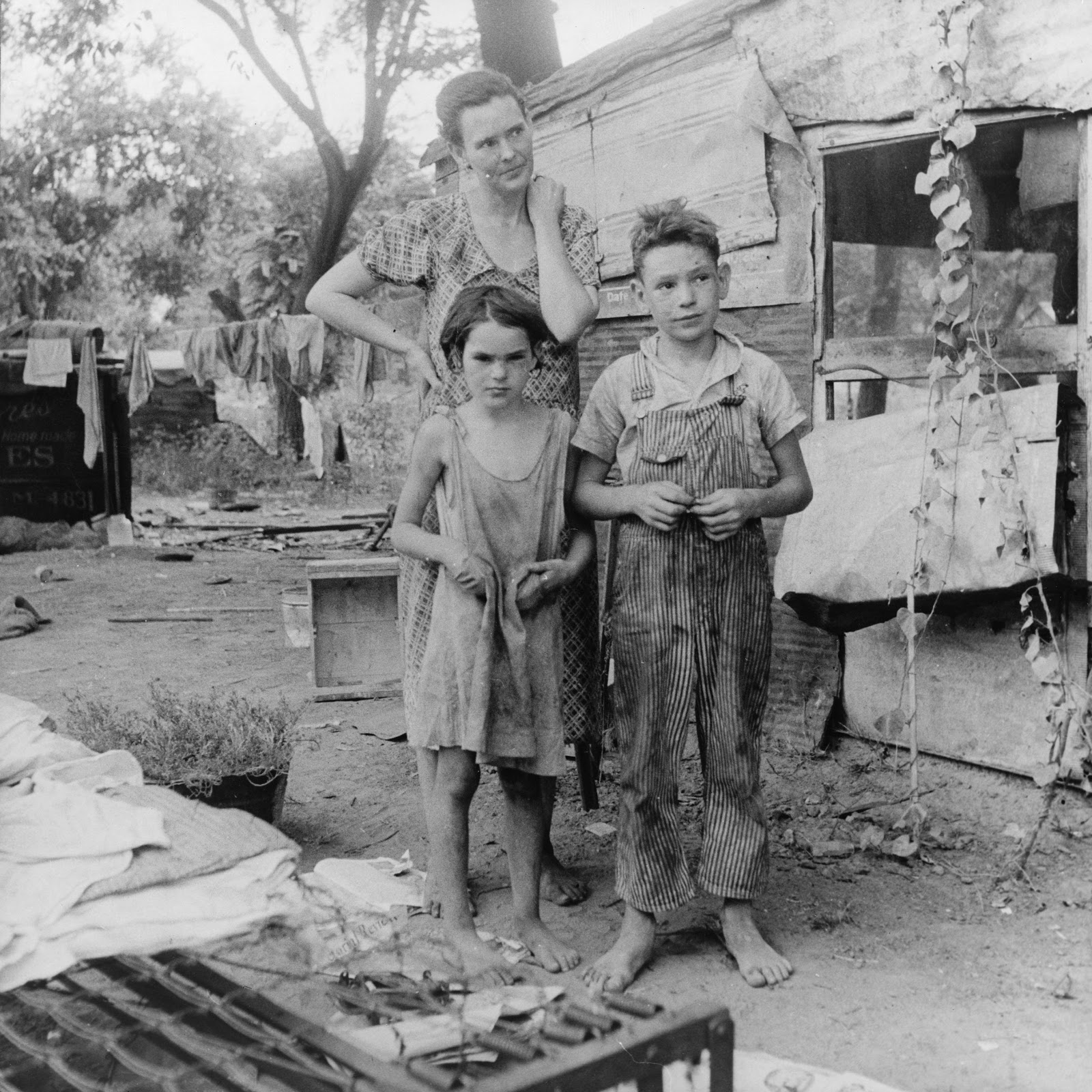
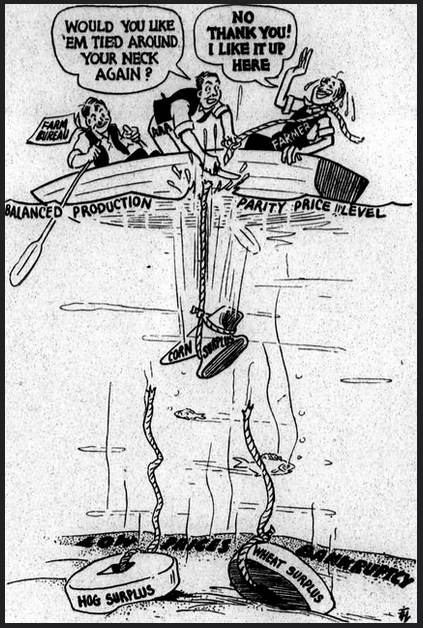
Video (00:04:33) Video First New Deal(https://login.proxy.nmc.edu/login?url=http://fod.infobase.com/PortalPlaylists.aspx?wID=105019&xtid=36219&loid=408816)
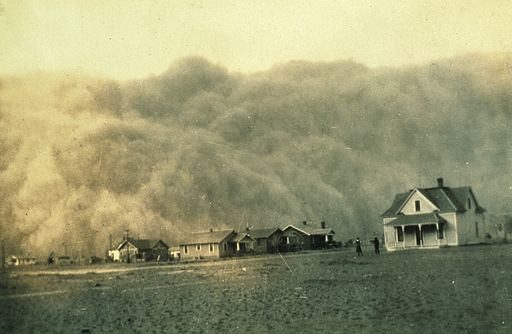
Between 1932 and 1935, farm income increased by more than 50 percent, but only partly because of federal programs. During the same years that farmers were being encouraged to take land out of production — displacing tenants and sharecroppers — a severe drought hit the Plains states. Violent wind and dust storms during the 1930s complicated an already difficult situation which became known as the Dust Bowl.
A succession of droughts combined with poor farming practices combined to dry up much of the topsoil of at least 19 different states in the southern Great Plains. The soil blew away with the west wind—much of it not reaching the ground again until it had reached Europe. The practice of farming up and down hills had to be replaced with terracing and circular plowing to keep water from running off and taking the soil with it.
By 1940, 2.5 million people had moved out of the Plains states, the largest migration in American history. Of those, 200,000 moved to California. The migrants were not only farmers, but also professionals, retailers, and others whose livelihoods were connected to the health of the farm communities. Many ended up competing for seasonal jobs picking crops at extremely low wages.
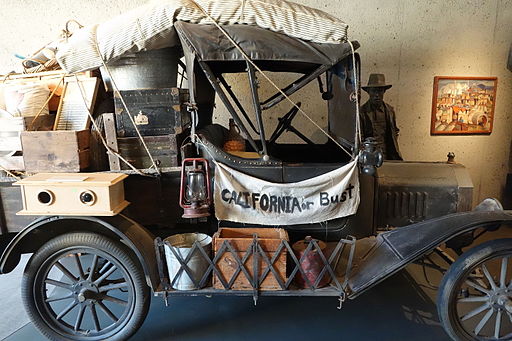
Many of these landed in the San Joaquin Valley where they set up new farms, or on the coast in the later 30s where they went to work in the defense industry. Many stayed in the Dust Bowl, placed wet curtains in the windows to keep the dust down and saw the crisis through. All were economically devastated.
The government provided aid in the form of the Soil Conservation Service, established in 1935. Farm practices that damaged the soil had intensified the impact of the drought. The service taught farmers measures to reduce erosion. In addition, almost 30,000 kilometers of trees were planted to break the force of winds.
Video (00:01:50) Terrace Farming (https://ensemble.nmc.edu/Watch/Ek2t5XQp)
Although the AAA had been mostly successful, it was abandoned in 1936, when its tax on food processors was ruled unconstitutional by the Supreme Court. Congress quickly passed a farm-relief act, which authorized the government to make payments to farmers who took land out of production for the purpose of soil conservation. In 1938, with a pro-New Deal majority on the Supreme Court, Congress reinstated the AAA.
By 1940 nearly six million farmers were receiving federal subsidies. New Deal programs also provided loans on surplus crops, insurance for wheat, and a system of planned storage to ensure a stable food supply. Economic stability for the farmer was improved, albeit at great expense and with extraordinary government oversight.
Industry and Labor
The National Recovery Administration (NRA), established in 1933 with the National Industrial Recovery Act (NIRA), attempted to end cutthroat competition by setting codes of fair competitive practice to generate more jobs and thus more buying. Although welcomed initially, the NRA was soon criticized for over-regulation and was unable to achieve industrial recovery. It was declared unconstitutional in 1935.
The NIRA had guaranteed to labor the right of collective bargaining through labor unions representing individual workers, but the NRA had failed to overcome strong business opposition to independent unionism. After its demise in 1935, Congress passed the National Labor Relations Act, which restated that guarantee and prohibited employers from unfairly interfering with union activities. It also created the National Labor Relations Board (NLRB) to supervise collective bargaining, administer union elections, and ensure workers the right to choose the organization that should represent them in dealing with employers.
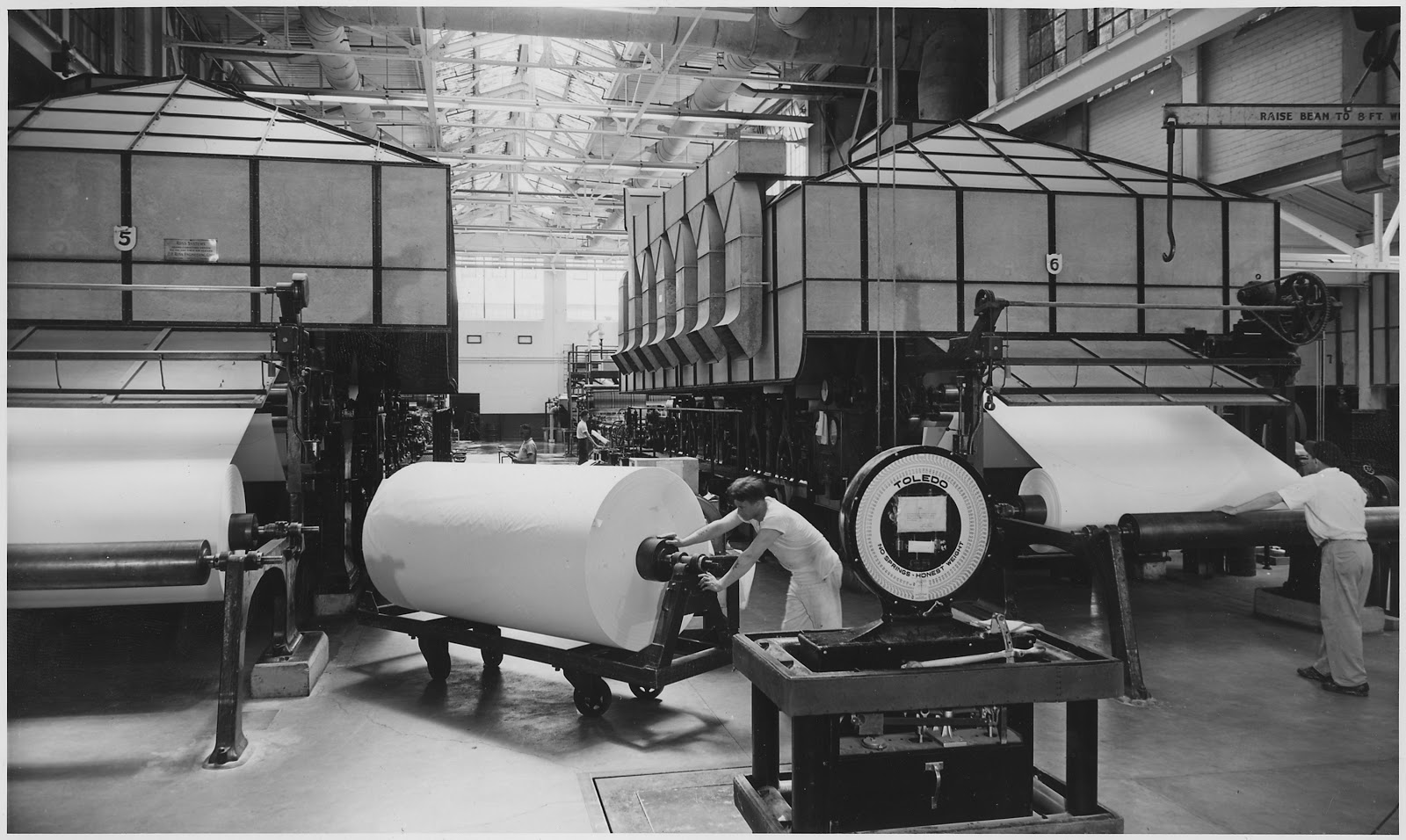
The great progress made in labor organization brought working people a growing sense of common interests, and labor’s power increased not only in industry but also in politics. Roosevelt’s Democratic Party benefited enormously from these developments.
Court Packing Controversy
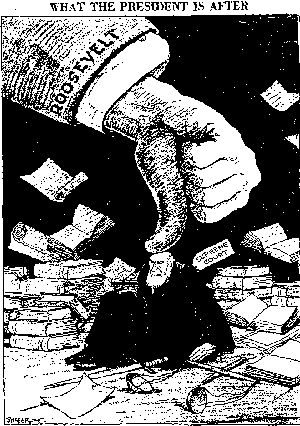
Roosevelt's confidence was bolstered by election wins, yet shaken by program failures and Supreme Court rulings. The huge mid-term election win for the Democrats in late 1934 followed by an even larger presidential election-year win in 1936 were interpreted by FDR as a mandate for his New Deal. Yet, the NRA, by 1935, had been captured by big business and had effectively squeezed the mom and pop stores out of business by encouraging a level of efficiency these small stores could not maintain and by forcing them to pay a minimum wage. Simultaneously, the Supreme Court began dismantling the first New Deal by striking down NIRA in 1935, followed by the AAA and the NRA. In frustration, Roosevelt sought to increase the federal judiciary by forty-four new judges in the lower federal courts and by up to six new Supreme Court Justices. Even his liberal supporters were alarmed at this attempted takeover of the Judiciary branch and Roosevelt lost the battle, lost face and caused the Congress to watch the growth of executive power more carefully.
Video (00:03:33) Video: FDR’s Critics https://login.proxy.nmc.edu/login?url=http://fod.infobase.com/PortalPlaylists.aspx?wID=105019&xtid=36219&loid=408817)
![Left to right: Social Security, Works Progress Administration, and Rural Electrification Administration posters. [Public Domain], via Wikimedia Commons.](https://www.oercommons.org/editor/images/3436)
Left to right: Social Security, Works Progress Administration, and Rural Electrification Administration posters. [Public Domain], via Wikimedia Commons.
THE SECOND NEW DEAL
In its early years, the New Deal sponsored a remarkable series of legislative initiatives and achieved significant increases in production and prices — but it did not bring an end to the Depression. As the sense of immediate crisis eased, new demands emerged. Businessmen mourned the end of “laissez-faire” and chafed under the regulations of the NIRA. Vocal attacks also mounted from the political left and right as dreamers, schemers, and politicians alike emerged with economic panaceas that drew wide audiences. Dr. Francis E. Townsend advocated generous old-age pensions. Father Charles Coughlin, the “radio priest,” called for inflationary policies and blamed international bankers in speeches increasingly peppered with anti-Semitic imagery. Most formidably, Senator Huey P. Long of Louisiana, an eloquent and ruthless spokesman for the displaced, advocated a radical redistribution of wealth. (If he had not been assassinated in September 1935, Long very likely would have launched a presidential challenge to Franklin Roosevelt in 1936.)
In the face of these pressures, President Roosevelt backed a new set of economic and social measures. Prominent among them were measures to fight poverty, create more work for the unemployed, and provide a social safety net.
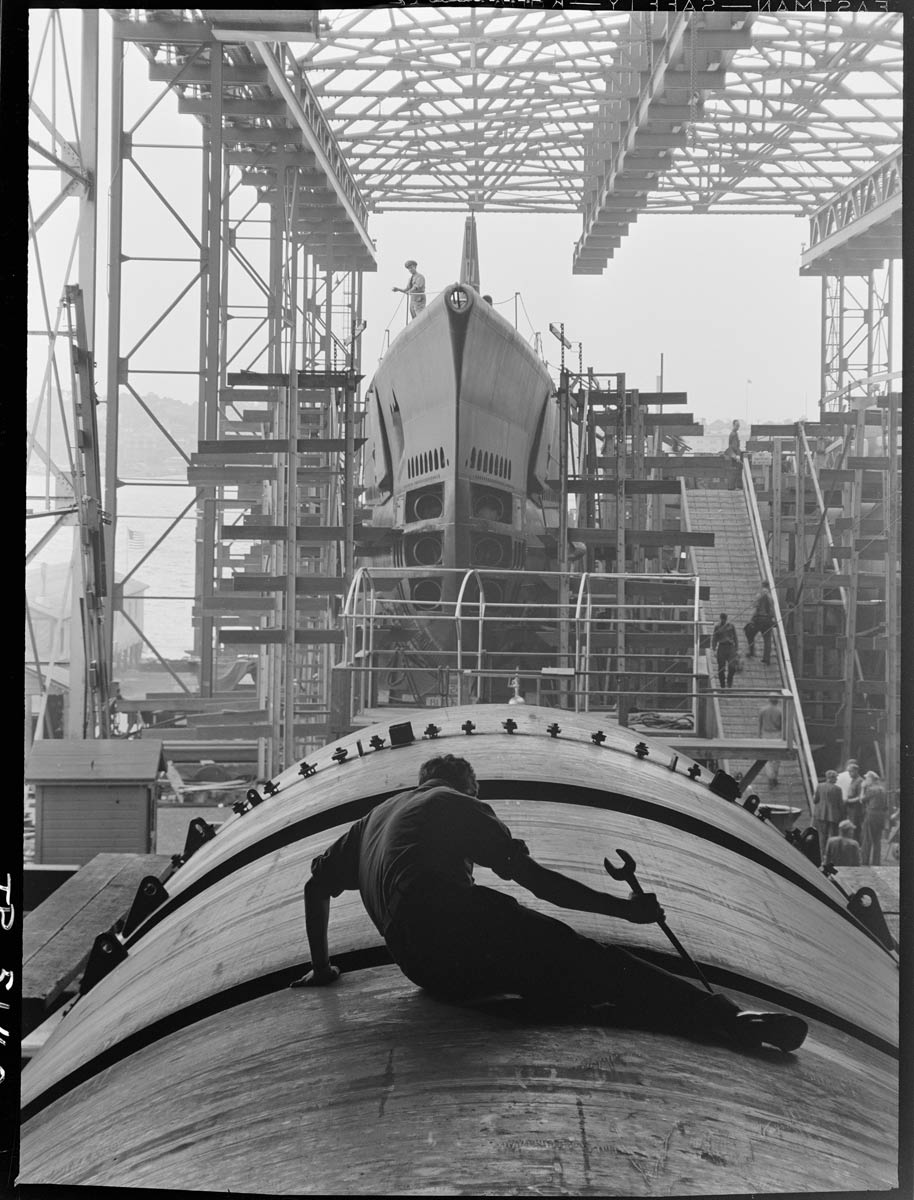
During the next several years, the administration moved toward a planned, regulated economy and social safety net; it also collected new, and loyal, allies; all of this, while successfully stopping far to the right of nationalizing the means of production. With this “second” New Deal, the idea of restricting production was dropped and deficit spending was adopted. In early 1935 the Emergency Relief Appropriations Act established the Works Progress Administration (WPA) as an effort to get people off of direct relief by building airports, hospitals and highways. The WPA also supported the arts by underwriting plays, vaudevilles, circuses, painters and writers. The WPA only included about three million jobless at a time; when it was abandoned in 1943, it had helped a total of nine million people.
The New Deal’s cornerstone, according to Roosevelt, was the Social Security Act of 1935 which began as a money-making program as benefits were to be paid out at age 65 while the average American wage earner only lived into their mid to late 40s. Social Security created a system of state-administered welfare payments for the poor, unemployed, and disabled based on matching state and federal contributions. It also established a national system of retirement benefits drawing on a “trust fund” created by employer and employee contributions. Many other industrialized nations had already enacted such programs, but calls for such an initiative in the United States had gone unheeded. Social Security today is the largest domestic program administered by the U.S. government.
Video (00:03:39) Second New Deal (https://login.proxy.nmc.edu/login?url=http://fod.infobase.com/PortalPlaylists.aspx?wID=105019&xtid=36219&loid=408818)
The Banking act of 1935 gave the Federal Reserve nearly complete control over credit and interest rates as a deterrent to future depressions. When it became clear that NIRA would be struck down, the National Labor Relations Act of 1935 was put in place to secure those labor rights previously guaranteed in section 7a of NIRA. The result was a Labor Relations Board which guaranteed the right to strike, and which defined unfair labor practices. This effectively brought labor to the table with industry as a major player in industrial dispute resolution and seriously undercut the appeal of Communism. Labor has been solidly Democrat ever since. Black Americans also switched from Lincoln's party in response to FDR prohibiting race discrimination in the WPA and Eleanor Roosevelt's steadfast support of black interests.
To these, Roosevelt added the “Wealth Tax Act” that increased taxes on the wealthy, the Public Utility Holding Company Act to break up large electrical utility conglomerates, and a Banking Act that greatly expanded the power of the Federal Reserve Board over the large private banks. Also notable was the establishment of the Rural Electrification Administration (REA), which brought power to rural areas and the Resettlement Administration (RA) which attempted to move urban slum dwellers into those areas.
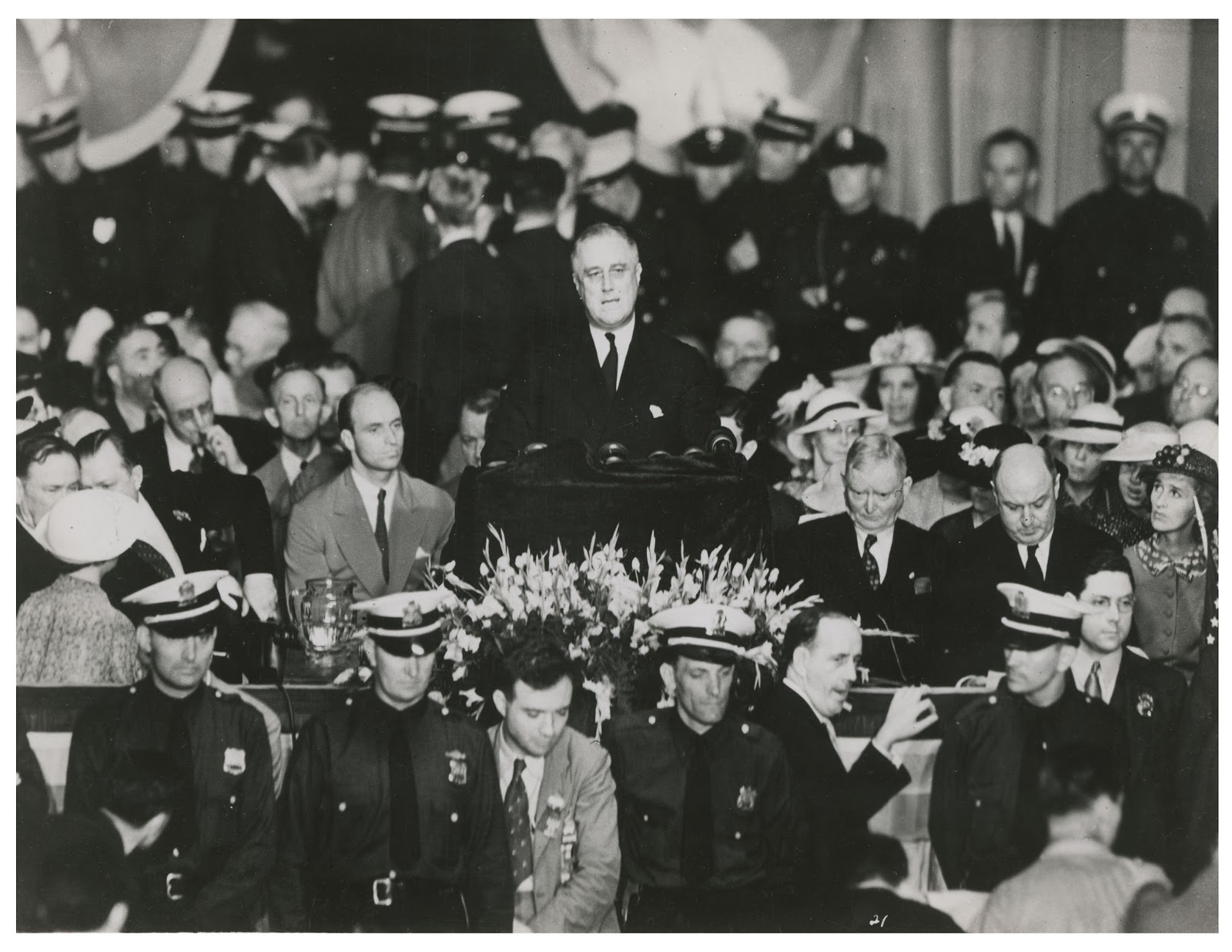
A NEW COALITION
In the 1936 election, Roosevelt won a decisive victory over his Republican opponent, Alf Landon of Kansas. He was personally popular, and the economy seemed near recovery. He took 60 percent of the vote and carried all but two states. A broad new coalition aligned with the Democratic Party emerged, consisting of labor, most farmers, most urban ethnic groups, African Americans, and the traditionally Democratic South. The Republican Party received the support of business as well as middle-class members of small towns and suburbs. This political alliance, with some variation and shifting, remained intact for several decades.
Roosevelt’s second term was a time of consolidation. The president made two serious political missteps: the ill-advised, unsuccessful attempt to enlarge the Supreme Court and a failed effort to “purge” increasingly recalcitrant Southern conservatives from the Democratic Party. These events led to the rise of a conservative coalition in Congress that was unreceptive to new initiatives.
Significant Recovery in 1936 led Roosevelt to believe, and to announce, that his New Deal was working. In the first half of 1937 he cut the budget of the WPA as the Federal Reserve raised interest rates. Both these happened as the first Social Security deductions were coming out of employers' and employees' pockets. The market dove again and unemployment soared. A huge appropriation to the WPA restarted deficit spending and brought a measure of stability back to the economy but this only encouraged Roosevelt to cut spending again.
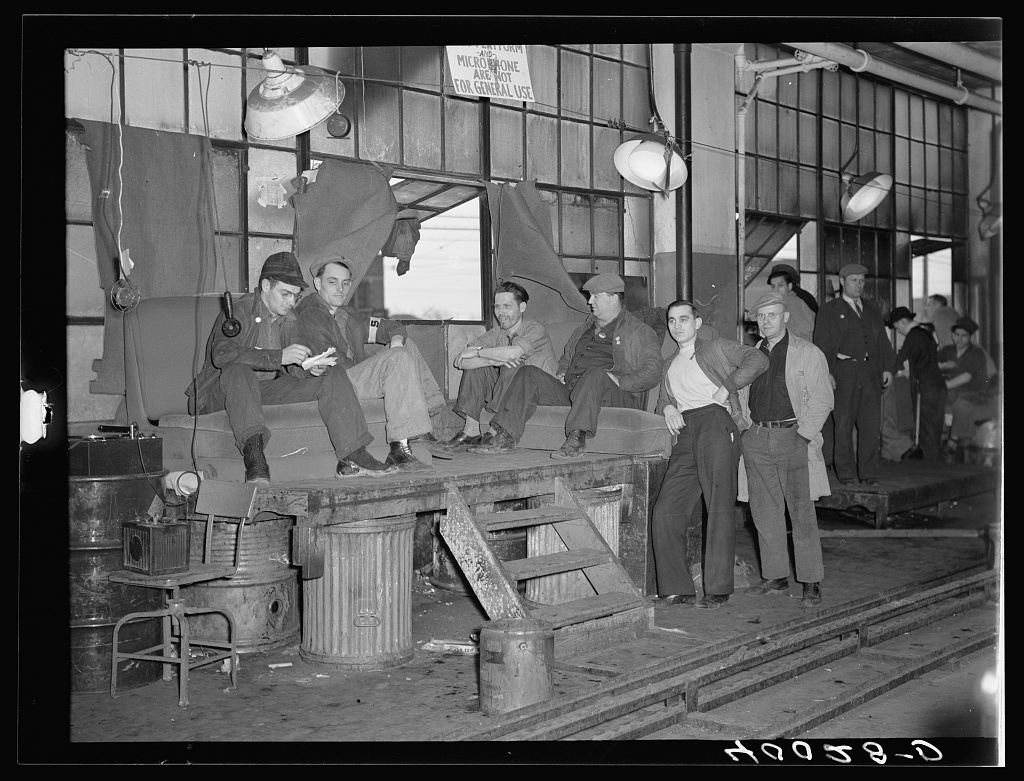
Labor leaders cashed in on the Labor Relations Act by organizing every major American industry within two years. With the right to strike, bargain and boycott now backed by the government, a series of crippling strikes in the recession year of 1937 brought unionization to every American industry. The Fair Labor Standards Act of 1938 established minimum wage standards, maximum hour standards and banned child labor. It was the last piece of New Deal legislation.
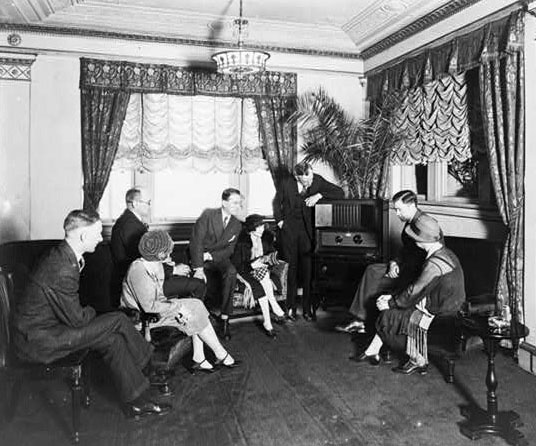
From 1932 to 1938 there had been widespread public debate on the meaning of New Deal policies to the nation’s political and economic life. Americans clearly wanted the government to take greater responsibility for the welfare of ordinary people, however uneasy they might be about big government in general. The New Deal established the foundations of the modern welfare state in the United States. Roosevelt, perhaps the most imposing of the 20th century presidents, had established a new standard of mass leadership.
No American leader, then or since, used the radio so effectively. In a radio address in 1938, Roosevelt declared: “Democracy has disappeared in several other great nations, not because the people of those nations disliked democracy, but because they had grown tired of unemployment and insecurity, of seeing their children hungry while they sat helpless in the face of government confusion and government weakness through lack of leadership.” Americans, he concluded, wanted to defend their liberties at any cost and understood that “the first line of the defense lies in the protection of economic security.” By the end of 1938, Roosevelt's attention was turning abroad.
THE RISE OF INDUSTRIAL UNIONS
While the 1920s were years of relative prosperity in the United States, the workers in industries such as steel, automobiles, rubber, and textiles benefited less than they would later in the years after World War II. Working conditions in many of these industries did improve. Some companies in the 1920s began to institute “welfare capitalism” by offering workers various pension, profit sharing, stock option, and health plans to ensure their loyalty. Still, shop floor environments were often hard and authoritarian.
The 1920s saw the mass production industries redouble their efforts to prevent the growth of unions, which under the American Federation of Labor (AFL) had enjoyed some success during World War I. They did so by using spies and armed strikebreakers and by firing those suspected of union sympathies. Independent unions were often accused of being Communist. At the same time, many companies formed their own compliant employee organizations, often called “company unions.”
Traditionally, state legislatures, reflecting the views of the American middle class, supported the concept of the “open shop,” which prevented a union from being the exclusive representative of all workers. This made it easier for companies to deny unions the right to collective bargaining and block unionization through court enforcement.
Between 1920 and 1929, union membership in the United States dropped from about five million to three-and-a-half million. The large unskilled or semi-skilled industries remained unorganized.
The onset of the Great Depression led to widespread unemployment. By 1933 there were over 12 million Americans out of work. In the automobile industry, for example, the workforce was cut in half between 1929 and 1933. At the same time, wages dropped by two-thirds.
The election of Franklin Roosevelt, however, was to change the status of the American industrial worker forever. The first indication that Roosevelt was interested in the well-being of workers came with the appointment of Frances Perkins, a prominent social welfare advocate, to be his secretary of labor. (Perkins was also the first woman to hold a Cabinet-level position.) The far reaching National Industrial Recovery Act sought to raise industrial wages, limit the hours in a work week, and eliminate child labor. Most importantly, the law recognized the right of employees “to organize and bargain collectively through representatives of their own choosing.”
John L. Lewis, the feisty and articulate head of the United Mine Workers (UMW), understood more than any other labor leader what the New Deal meant for workers. Stressing Roosevelt’s support, Lewis engineered a major unionizing campaign, rebuilding the UMW’s declining membership from 150,000 to over 500,000 within a year.
Lewis was eager to get the AFL, where he was a member of the Executive Council, to launch a similar drive in the mass production industries. But the AFL, with its historic focus on the skilled trade worker, was unwilling to do so. After a bitter internal feud, Lewis and a few others broke with the AFL to set up the Committee for Industrial Organization (CIO), later the Congress of Industrial Organizations. The passage of the National Labor Relations Act (NLRA) in 1935 and the friendly attitude of the National Labor Relations Board put the power and authority of the federal government behind the CIO.
Its first targets were the notoriously anti-union auto and steel industries. In late 1936 a series of sit-down strikes, orchestrated by the fledgling United Auto Workers union under Walter Reuther, erupted at General Motors plants in Cleveland, Ohio, and Flint, Michigan. Soon 135,000 workers were involved and GM production ground to a halt.
With the sympathetic governor of Michigan refusing to evict the strikers, a settlement was reached in early 1937. By September of that year, the United Auto Workers had contracts with 400 companies involved in the automobile industry, assuring workers a minimum wage of 75 cents per hour and a 40-hour work week
In the first six months of its existence, the Steel Workers Organizing Committee (SWOC), headed by Lewis lieutenant Philip Murray, picked up 125,000 members. The major American steel company, U.S. Steel, realizing that times had changed, also came to terms in 1937. That same year the Supreme Court upheld the constitutionality of the NLRA. Subsequently, smaller companies, traditionally even more anti-union than the large corporations, gave in. One by one, other industries — rubber, oil, electronics, and textiles — also followed suit.
The rise of big labor had two major long-term impacts. It became the organizational core of the national Democratic Party, and it gained material benefits for its members that all but erased the economic distinction between working-class and middle-class America.